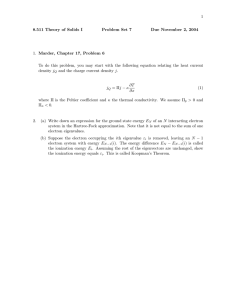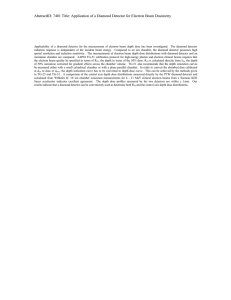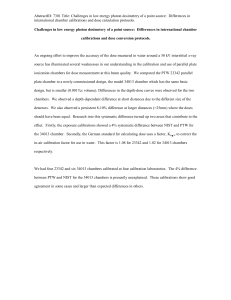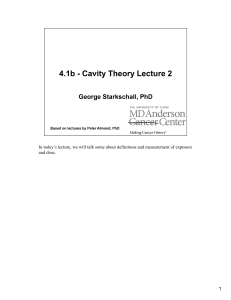AbstractID: 4858 Title: An empirical method for the determination of... factors for parallel-plate chambers in high energy electron beams
advertisement
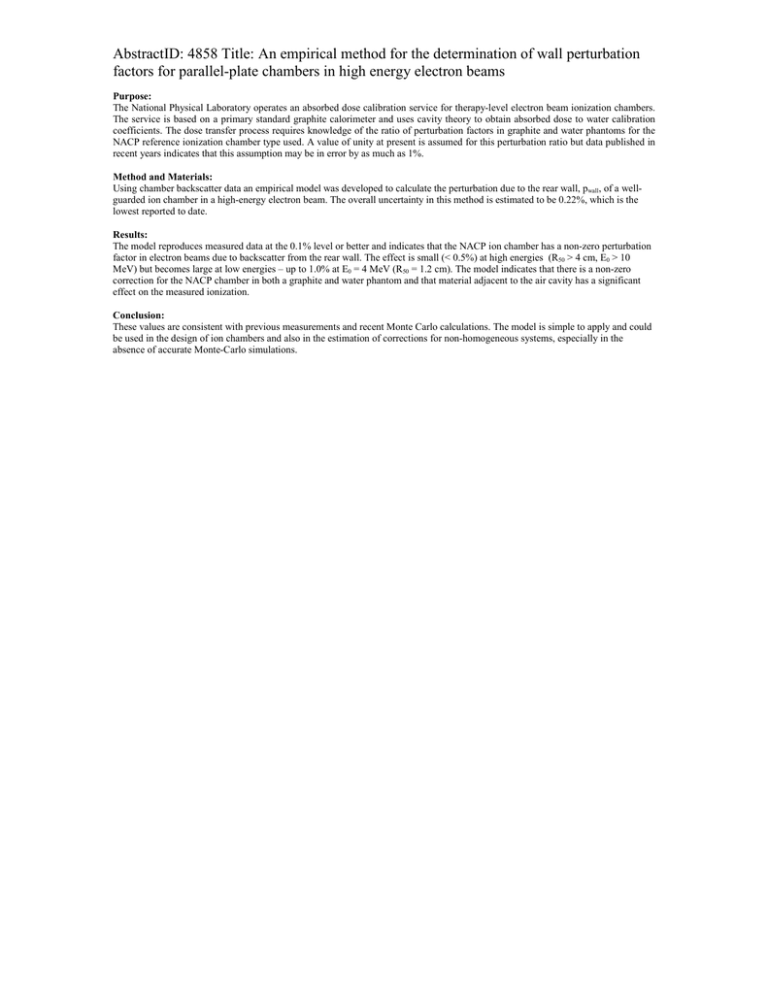
AbstractID: 4858 Title: An empirical method for the determination of wall perturbation factors for parallel-plate chambers in high energy electron beams Purpose: The National Physical Laboratory operates an absorbed dose calibration service for therapy-level electron beam ionization chambers. The service is based on a primary standard graphite calorimeter and uses cavity theory to obtain absorbed dose to water calibration coefficients. The dose transfer process requires knowledge of the ratio of perturbation factors in graphite and water phantoms for the NACP reference ionization chamber type used. A value of unity at present is assumed for this perturbation ratio but data published in recent years indicates that this assumption may be in error by as much as 1%. Method and Materials: Using chamber backscatter data an empirical model was developed to calculate the perturbation due to the rear wall, pwall, of a wellguarded ion chamber in a high-energy electron beam. The overall uncertainty in this method is estimated to be 0.22%, which is the lowest reported to date. Results: The model reproduces measured data at the 0.1% level or better and indicates that the NACP ion chamber has a non-zero perturbation factor in electron beams due to backscatter from the rear wall. The effect is small (< 0.5%) at high energies (R50 > 4 cm, E0 > 10 MeV) but becomes large at low energies – up to 1.0% at E0 = 4 MeV (R50 = 1.2 cm). The model indicates that there is a non-zero correction for the NACP chamber in both a graphite and water phantom and that material adjacent to the air cavity has a significant effect on the measured ionization. Conclusion: These values are consistent with previous measurements and recent Monte Carlo calculations. The model is simple to apply and could be used in the design of ion chambers and also in the estimation of corrections for non-homogeneous systems, especially in the absence of accurate Monte-Carlo simulations.


